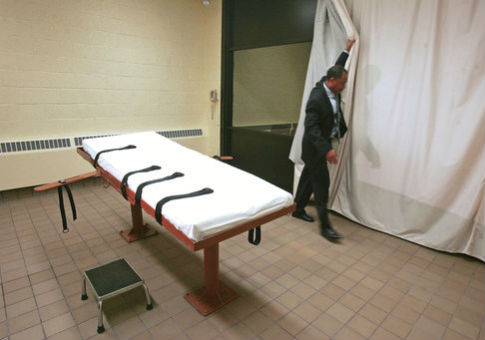A federal appeals court on Wednesday cleared the way for the state of Ohio to recommence executions for those on death row after a 3.5-year period without any executions.
The U.S. Sixth Circuit Court of Appeals found that the state's new drug cocktail passed constitutional muster, overturning a lower court ruling, Cleveland.com reports.
At the center of the case was a controversial sedative that the state wanted to continue using. Ohio's execution mixture has included and still includes the sedative midazolam, which some claim can lead to violent convulsions before death. In 2015, the Supreme Court found in Glossip v. Gross that some lethal injections involving midazolam did not constitute "cruel and unusual punishment" for purposes of the Eight Amendment.
Ohio has not executed anyone since 2014, when convicted murderer Dennis McGuire took more than 25 minutes to die, gasping and snorting during the process. The cocktail used on McGuire included midazolam, and his death resembled other much-publicized deaths of those executed using midazolam, including Oklahoma's Clayton Lockett.
Following McGuire's execution, Ohio met with challenges in continuing its chemical execution practices. Pharmaceutical companies declined to sell execution drugs to the state, and the FDA told Ohio it would be illegal to import sodium thiopental, another execution drug, from overseas.
The state eventually developed a new drug cocktail, meant to address the challenge of sourcing. The three-drug mix includes midazolam, potassium chloride, which stops the heart, and rocuronium bromide, a paralytic.
But three death row inmates—Gary Otte, Ronald Phillips, and Raymond Tibbetts—challenged the selection of drugs. And Magistrate Judge Michael Merz sided with them in January, writing that the mixture will create a "'substantial risk of serious harm'" or an "'objectively intolerable risk of harm,'" a standard the Supreme Court set out in Baze v. Rees for determining whether an execution method passes Eight Amendment muster.
The argument passed from Merz's chambers to the sixth circuit, where Attorney for Ohio Eric Murphy cited Glossip in arguing that the use of Midazolam was Eight-Amendment approved. Plaintiff's attorney Erin Gallagher Barnhart retorted that the Ohio execution procedure varied from the one used in Glossip, and therefore could be found to violate Baze. Otte et. al., claiming that the use of midazolam "would cause them to suffer severe pain in violation of the Eighth Amendment."
The court ultimately split 8-6, largely along ideological, conservative-liberal lines. The majority opinion, authored by Judge Raymond Kethledge, argued that "some risk of pain 'is inherent in any method of execution—no matter how humane,'" and that the plaintiffs had not adequately shown that the pain was guaranteed in contravention of the Eight Amendment.
"The Constitution does not guarantee 'a pain-free execution,'" Kethledge wrote.
Kethledge was among those considered by President Donald Trump for appointment to the Supreme Court to replace deceased Justice Antonin Scalia, the Wall Street Journal reported at the time. The seat eventually went to conservative jurist Neil Gorsuch.
Judge Karen Nelson Moore wrote for the minority, arguing that there was far less ambiguity to whether midazolam caused pain than the majority believed.
"There is no dispute that the second and third drugs in Ohio's execution protocol cause immense pain. There is significant evidence that the first drug, midazolam, cannot prevent someone from feeling that pain," she wrote.
Moore also pointed out that there were quite likely reasonable alternatives that could be used in place of controversial midazolam.
Death penalty abolitionists, who originally brought the case, have promised to appeal the court's ruling to the Supreme Court. In the meantime, the state has scheduled more than two dozen executions for the next three years.
